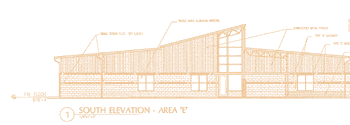Designs on Comprehensive School Reform
A new federal initiative promises dollars for schools and districts that take on comprehensive school reform.
Great schools don't happen by accident. They happen by design . . .[designs that are] comprehensive blueprints for a school . . .a package of proven strategies, methods, and practice.—New American Schools Annual Report, 1995/1996
Public opinion polls consistently rank the quality of public education as the number one political issue in the US today. By many accounts, large numbers of students are not succeeding in school, and schools that serve disadvantaged students are considered America's worst. A recently completed national evaluation of the effectiveness of the Title I program by Abt Associates of Cambridge, Massachusetts, raises questions about the ability of Title I to enable low-performing elementary schools to better serve disadvantaged students.
 Realizing many schools face a constellation of problems and address them with little evidence of success, the education R&D community, policymakers, and many education practitioners are investigating more broadly focused approaches. Often referred to as "comprehensive school reform" models, these strategies range from revised Title I regulations for schoolwide programs to the creation of seven New American Schools models. A new initiative, the Comprehensive School Reform Demonstration (CSRD) program, provides incentives for schools that adopt successful comprehensive school reform models.
Realizing many schools face a constellation of problems and address them with little evidence of success, the education R&D community, policymakers, and many education practitioners are investigating more broadly focused approaches. Often referred to as "comprehensive school reform" models, these strategies range from revised Title I regulations for schoolwide programs to the creation of seven New American Schools models. A new initiative, the Comprehensive School Reform Demonstration (CSRD) program, provides incentives for schools that adopt successful comprehensive school reform models.
Funding for comprehensive reform
The CSRD program, part of the FY98 Labor-HHS-Education Appropriations Act, makes $145 million available to state education agencies to award competitive grants to schools and school districts that pursue comprehensive school reform. Of that amount, $120 million is allocated for Title I schools and $25 million for any school under the Fund for the Improvement of Education (FIE). Officials from the US Department of Education (USDE) expect approximately 3,000 schools to receive grants of no less than $50,000, renewable for two additional years. Arkansas, Louisiana, New Mexico, Oklahoma, and Texas will receive approximately $19.71 million of the funds available nationwide. This means that about 390 schools in the region could receive awards if all five states decide to limit grants to the established minimum of $50,000. Alabama, Georgia, and Mississippi, served by SEDL's Southeast Comprehensive Assistance Center, will receive $8.38 million and, accordingly, might expect 165 schools to be funded in their region with an average award of $50,000. The table to the right, "Expected FY98 CSRD Appropriations," lists projected Title I and FIE allocations for each of the eight states.
| Expected FY98 CSRD Appropriations | |||
| Title I Allotment | FYI Allotment | Total | |
| Alabama | $1,951,950 | $377,462 | $2,329,412 |
| Arkansas | 1,181,429 | 234,365 | 1,415,794 |
| Georgia | 3,160,896 | 677,540 | 3,838,436 |
| Louisiana | 2,956,617 | 438,146 | 3,394,763 |
| Mississippi | 1,946,493 | 267,041 | 2,213,534 |
| New Mexico | 1,004,410 | 176,768 | 1,181,178 |
| Oklahoma | 1,386,762 | 315,967 | 1,702,729 |
| Texas | 10,146,977 | 1,871,855 | 12,213,534 |
A two-tiered application process
The CSRD program will be implemented in two steps. First, state education agencies will design a plan for how their states will use their CSRD funds then they will run a competition for schools to apply for the funding. Second, districts and schools will apply for program funds and those receiving awards will implement the reform.
State education agencies must apply to the USDE for their allocations. They can submit plans as early as this spring, and funds will be available to states starting July 1, 1998. In their funding applications, state agencies must describe how they will announce the program, define eligibility requirements, solicit competitive proposals from districts and schools, review applications, and select recipients. Each state's plan for the CSRD program must consider how many competitive grants to award, how and when dollars will be distributed, and which of the 17 comprehensive school models or approaches named in the CSRD regulations are acceptable. Each state education agency must design an evaluation process to measure the program's success in its state.
Once a state's plan is approved, the focus moves to the local level. Districts and schools should learn what comprehensive school reform means, and ask themselves, "Is this the right approach for us to take to improve our students' learning? Are we ready to pursue it?"
If the answer is yes, then schools and districts should examine the identified models to decide whether any match their needs and/or improvement efforts already underway. Applicants may also want to propose their own or another home-grown program, a school reform approach that is research-tested, research-based, and comprehensive, but not one of the 17 widely recognized models named in the CSRD legislation. If districts and schools pursue a recognized model, they must establish a relationship with the model's developer before writing the proposal; "Comprehensive School Reform Models" in the table below lists the models' names and phone numbers. After these preparations, districts and schools develop and submit proposals in response to their state's request for comprehensive school reform proposals.
The timetable of these events will vary from state to state, depending on when each state submits its plan and how it runs its CSRD competition.
| Comprehensive School Reform Models | ||
| Congress recognized 17 reform models as meeting criteria that define comprehensive school reform. While these are not the only approaches that meet such criteria, they are widely known. We list them below with phone numbers so schools and districts can contact the programs. Visit the "School Reform Models" (link no longer available 11/01/2006) page of SEDL's CSR Web site for model descriptions, links to Web sites maintained by model developers and for information about other models beyond these 17. | ||
| Accelerated Schools | 650/725-1676 | |
| Atlas Communities | 617/969-7100, ext. 2401 | |
| Audrey Cohen College | 212/343-1234, ext. 3400 | |
| Coalition of Essential Schools | 401/863-3384 | |
| Community for Learning | 800/892-5550 | |
| Co-NECT | 617/873-3919 | |
| Direct Instruction | 541/485-1293 | |
| Expeditionary Learning Outward Bound | 617/576-1260 | |
| High Schools That Work | 404/875-9211 | |
| Modern Red Schoolhouse | 615/320-8804, ext. 40 | |
| National Alliance for Restructuring Education | 202/783-3668 | |
| Paideia | 919/962-7379 | |
| Roots and Wings | 800/548-4998 | |
| School Development Program | 203/737-4016 | |
| Success for All | 800/548-4998 | |
| Talent Development High School | 410/516-8800 | |
| Urban Learning Center* | 213/622-5237 | |
| *Will answer "Los Angeles Learning Center" | ||
Defining comprehensive school reform
Comprehensive school reform approaches share several important characteristics. They include all grade levels and address all core academic subject areas, instruction, and school organization — they are comprehensive. They incorporate research about best practices so that every school does not have to start from scratch — they are research-based. They have undergone rigorous and independent evaluations to demonstrate their effectiveness and success for all students — they are research-tested. Challenging academic standards, continuous professional development, appropriate uses of proven instructional technologies and strategies, meaningful parent and community support — to name a few — are usually part of a comprehensive approach.
Whether applicants choose one of the widely recognized models or propose a home-grown model, their applications must show how their approach indeed will be comprehensive. The nine characteristics of a comprehensive school reform model appear on the CSRD Web site under "Program Components"; "A CSRD Resource Guide" below introduces other supports available to CSRD applicants and awardees.
The vision of a comprehensive approach to school reform and improvement shows clearly in the intent of the enabling legislation, sponsored by Rep. David Obey (D-WI) and Rep. John Edward Porter (R-IL). This program acknowledges that schools with high Title I student populations often must reckon with the conditions of poverty, lack of student support services, preventive medical care, and low parental involvement because parents may work two jobs or speak a language other than English. Yet as the teachers, parents, and community members of Albuquerque's South Valley show in "A Comprehensive Collaboration," children in such schools and communities can succeed in schools — they can be made healthy and ready to learn; they can learn to read; they can stay in school. The CSRD program provides a critical opportunity for states, districts, schools, and the education R&D community to join together to make a significant difference for low-achieving students.
The role of SEDL and regional educational labs
To promote and facilitate the CSRD program's quick start-up, Congress appropriated funds for the USDE to disseminate proven comprehensive school reform models. SEDL and the other nine regional laboratories will provide technical assistance to states and schools that will implement the initiative. During the first year, SEDL expects to provide assistance in three general areas:
- Assistance to states, districts, and schools With its CSRD Web site and telephone referral service, SEDL provides objective information about the program and comprehensive reform models/approaches.
- Assistance to states only Working with designated state contacts, SEDL will help states develop and prepare plans for conducting their state CSRD program competitions.
- Assistance to districts and schools only SEDL staff will help districts and schools make smart choices about pursuing CSRD program funds, models, or approaches, help them prepare proposals, and help local schools plan and implement comprehensive school reform.
SEDL's work on the Comprehensive School Reform Development program is well underway. The lab has set to work with state education agencies of the five-state region to plan and develop state competitions. The CSRD Resource Guide published here provides more information.
| A CSRD Resource Guide | ||||||||||||||||||||||||||||
SEDL and Comprehensive School Reform There's already much information available to help you learn more about the Comprehensive School Reform Demonstration program. To take advantage of the CSRD support offered by the Southwest Educational Development Laboratory:
| ||||||||||||||||||||||||||||
| ||||||||||||||||||||||||||||
Joan Buttram was SEDL's Chief Operating Officer and managed SEDL's work in the CSRD program.
Next Article: Resources for Family and Community Involvement in Schools

